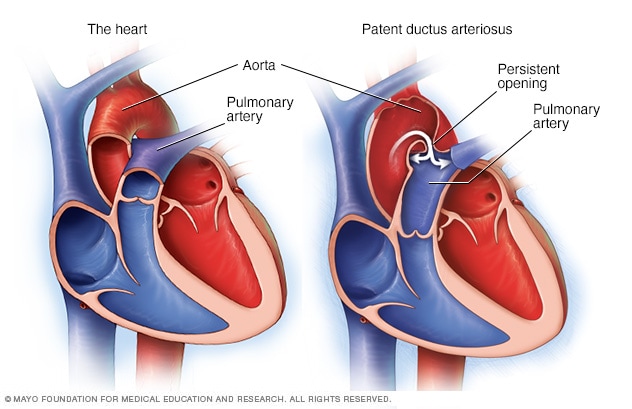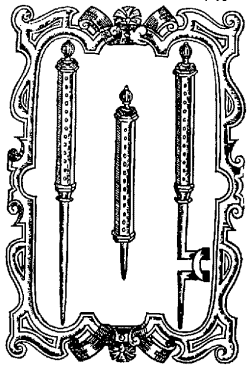Friday Fun Facts - 10/5/2012

Here are this week's Friday Fun Facts about Diana Gabaldon's books.

1) Here is a diagram of what a heart with a patent ductus arteriosus (PDA) looks like, compared to a normal heart. (Click on the diagram to enlarge it.) As Claire explained:
The ductus arteriosus is a small blood vessel that in the fetus joins the aorta to the pulmonary artery. Babies have lungs, of course, but prior to birth don’t use them; all their oxygen comes from the placenta, via the umbilical cord. Ergo, no need for blood to be circulated to the lungs, save to nourish the developing tissue--and so the ductus arteriosus bypasses the pulmonary circulation.The first surgery to repair a PDA was performed by Dr. Robert Gross in 1938 -- and by coincidence, it took place in the Children's Hospital in Boston. I can easily imagine that baby Mandy might have had her surgery done in that same hospital, forty years later.
At birth, though, the baby takes its first breath, and oxygen sensors in this small vessel cause it to contract--and close permanently. With the ductus arteriosus closed, blood heads out from the heart to the lungs, picks up oxygen, and comes back to be pumped out to the rest of the body. A neat and elegant system--save that it doesn’t always work properly.
The ductus arteriosus doesn’t always close. If it doesn’t, blood still does go to the lungs, of course--but the bypass is still there. Too much blood goes to the lungs, in some cases, and floods them. The lungs swell, become congested, and with diverted blood flow to the body, there are problems with oxygenation--which can become acute.
(From A BREATH OF SNOW AND ASHES by Diana Gabaldon, chapter 114, "Amanda". Copyright© 2005 by Diana Gabaldon. All rights reserved.)
2) The coin pictured above is an Irish copper halfpenny from 1766, during the reign of George III. (Click on the photo for a bigger view.) This is as close as I could find to the coin described in the following scene from VOYAGER:
"There are moments, Sassenach, when for one copper penny, I’d have ye on the spot, back against the mast and your skirts about your waist, and devil take the bloody crew!”
My fingers convulsed against his palm, and he tightened his grasp, nodding pleasantly in response to the greeting of the gunner, coming past on his way toward the quarter-gallery.
[....]
I drew my hand out of my pocket, having found what I was looking for. I took his hand and pressed the object into his palm. He stared down at the image of King George III in his hand, then up at me.
"On account," I said. "Let's go and eat."
(From VOYAGER by Diana Gabaldon, chapter 44, "Forces of Nature". Copyright© 1994 by Diana Gabaldon. All rights reserved.)

3) The devices shown above are witch-pricking needles, used in the 16th and 17th centuries as a means of testing for witchcraft. As Geillis Duncan told Claire,
"Witches canna feel pain,” Geilie explained. “Nor do they bleed when they’re pricked.” The witch-pricker, equipped with a variety of pins, lancets, and other pointed implements, was charged with testing for this condition. I vaguely recalled something of this from Frank’s books, but had thought it a practice common to the seventeenth century, not this one. On the other hand, I thought wryly, Cranesmuir was not exactly a hotbed of civilization.In the illustration above, the device in the middle appears to be one such retractable needle.
“In that case, it’s too bad there won’t be one,” I said, though recoiling slightly at the thought of being stabbed repeatedly. “We could pass that test with no difficulty. Or I could,” I added caustically. “I imagine they’d get ice water, not blood, when they tried it on you.”
“I’d not be too sure,” she said reflectively, overlooking the insult. “I’ve heard of witch-prickers with special pins--made to collapse when they’re pressed against the skin, so it looks as though they don’t go in.”
(From OUTLANDER by Diana Gabaldon, chapter 25, "Thou Shalt Not Suffer a Witch to Live". Copyright© 1991 by Diana Gabaldon. All rights reserved.)
What were the witch-prickers looking for, exactly? From Wikipedia:
Being found to have [a witches' mark] was considered undeniable proof of being a witch. All witches and sorcerers were believed to have a witches' mark waiting to be found. A person accused of witchcraft was brought to trial and carefully scrutinized. The entire body was suspect as a canvas for a mark, an indicator of a pact with Satan. Witches’ marks were commonly believed to include moles, scars, birthmarks, skin tags, supernumerary nipples, natural blemishes and insensitive patches of skin. Experts, or Inquisitors, firmly believed that a witches’ mark could be easily identified from a natural mark; in light of this belief, protests from the victims that the marks were natural were often ignored.And if you happen to be a time-traveler with a mysterious mark on your arm? I think Claire was very lucky that there was no witch-pricker in Cranesmuir.

4) This is a male frigate bird, similar to the one that Claire saw in VOYAGER just after her escape from the Porpoise:
The bird stopped preening and eyed me censoriously. Then he lifted his beak into the air, puffed his chest, and as though to further establish his sartorial superiority, suddenly inflated a large pouch of brilliant red skin that ran from the base of his neck halfway down his body.Here's a brief video showing the male frigate bird's courtship display.
“Bwoom!” he said, repeating the cannon-like noise that had startled me before. It startled me again, but not so much.
“Don’t do that,” I said irritably. Paying no attention, the bird slowly flapped its wings, settled back on its branch, and boomed again.
There was a sudden harsh cry from above, and with a loud flapping of wings, two more large black birds plopped down, landing in a mangrove a few feet away. Encouraged by the audience, the first bird went on booming at regular intervals, the skin of his pouch flaming with excitement.
(From VOYAGER by Diana Gabaldon, chapter 50, "I Meet a Priest". Copyright© 1994 by Diana Gabaldon. All rights reserved.)
You can learn more about frigate birds here.

5) This is a hairstyle worn by Marie Antoinette, who became Queen of France in 1774. For a time in the 1770s, it was fashionable for upper-class ladies to wear very, very elaborate hairstyles. But why sailing ships, of all things? Here's one explanation:
One of the most fashionable hairstyles of the eighteenth century, À la Belle Poule, commemorated the victory of a French ship over an English ship in 1778. À la Belle Poule featured an enormous pile of curled and powdered hair stretched over a frame affixed to the top of a woman's head. The hair was then decorated with an elegant model of the Belle Poule ship, including sails and flags.

So it makes sense that the hairdresser helping Claire prepare for the Mischianza in May, 1778, would have put her hair up in a style that was all the rage that year among the nobility. But I'm VERY glad that she roused herself from the fog of grief and depression long enough to refuse to wear such a thing.
John had presented me with the gown this morning, as well as summoning a hairdresser to deal with me from the neck up. I’d shut my eyes, rather shocked at how enjoyable the man’s fingers felt in my hair--but still more shocked when he handed me a looking glass and I saw a towering confection of curls and powder, with a tiny ship perched in it. Full-rigged.If you do a Google image search on "Marie Antoinette ship hair", you'll find many more examples. The satirists of the day appear to have found these extravagant coiffures highly entertaining. Take a look at this page, which has a number of illustrations from the period. I think some of the drawings are hilarious!
I’d waited ’til he left, then hurriedly brushed it all out and pinned it up as simply as I could. John had given me a look, but said nothing.
(From AN ECHO IN THE BONE by Diana Gabaldon, chapter 98, "Mischianza". Copyright© 2009 by Diana Gabaldon. All rights reserved.)
I hope you enjoyed these Friday Fun Facts! Look here to see all of my Friday Fun Facts blog posts by date, or here to see the new index of all of the topics I've covered so far. And please come back next week for more!







Kathy
Karen